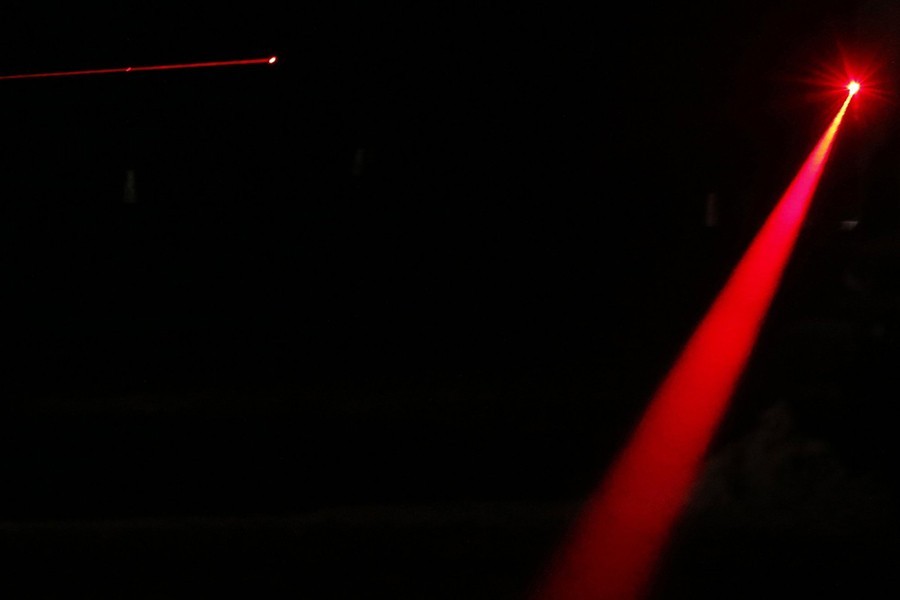Subscribers of mobile phones in the country received an unusual SMS on August 11. They have long been used to the newspaper advertisements warning fishing trawlers in the Kutubdia deep-sea zone to refrain from their activities on certain days. The warning is prompted by the naval forces' attempts to keep sea-going vessels free from being caught in the firing range during their routine exercises using live ammunitions. The SMS released by the government authorities urged people not to throw focus of laser beams on aircraft flying overhead. It adds the act is hazardous for the passing aircraft and a threat to them. Throwing colourful laser lights into the night sky has lately emerged a part of many large celebrations.
One would like to believe these new sportive activities are a part of youthfulness. The laser beams are mere replacement of traditional firework displays. To the people not acquainted with them, the seemingly sky-sweeping laser beams create a mixed feeling of wonder and awe. But there are seeds of worries. In a bid to startle the audience, fun-loving and daredevil youths throw focus on low-flying drones. All this might whet the curiosity of a section of youths to watch the behaviour of an aircraft on being caught by the high-power laser ray. By doing this finally, they might unwittingly invite a dangerous situation.
Aviation experts know well that while on full-speed flight, the aircraft become too sensitive to absorb even the impact of brush with a mid-size bird. Collision with high-altitude birds like kites and vultures has led to many a mid-air mishap in the past.
The National Geographic's 'Air Crash Investigation' is one of the most highly popular programmes telecast by the channel. Apart from aircraft and air travel aficionados, it draws hundreds and thousands of general people across the world. A large segment of them comprises frequent flyers. The programme shows the painstakingprocess through which globally and regionally famed investigators probe the possible causes of certain air crashes. Some causes remain shrouded in mystery. They are recorded in the history of aviation as unsolved puzzles. The most widely discussed of them are the nose-diving of large passenger Boeing aircraft into the mid-sea over the last decade. As the investigators weigh the possible causes and the prevailing circumstances in the cockpit, the aircraft control room and the runway condition, some emerge as common ones. Some are identified as being results of unforeseen technical malfunctions during a plane's take-off and landing, accumulation of snow onthe wings, wrong use of vital gear by a novice pilot and also misunderstanding between the chief pilot and the co-pilots. Overlooking a pilot being in a state of hangover caused by a drinking binge the previous night is also among them.
These and many other factors are generally held responsible for air crashes, which are on the increase these days. Some are, however, not much common. They include accidental downing of passenger aircraft during peacetime and also their being caught in war zones. These mistaken attacks on commercial flights confusing them with warplanes or reconnaissance craft began in the recent times with the Sakhalin Island tragedy. The tragic mishap involved a Soviet air-to-air missile hitting a Korean passenger jet over the Russian island of Sakhalin in 1983. All the passengers and crew aboard the plane died. It was followed by the 1988 shooting down of an Iranian passenger aircraft over the Hormuz Strait, mistakenly by a US missile cruiser. All 290 passengers and crew on board died. A Malaysian passenger flight on Amsterdam-Kuala Lumpur route was shot down while flying across the conflict zone of Ukraine in 2004.
The government's warning about the feared abuse of laser beams by targeting aircraft is a timely one. One hopes, the innocent fun doesn't fall into the wrong hands.


